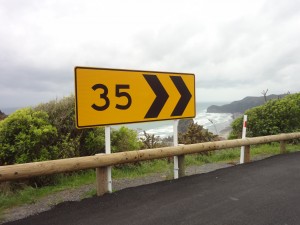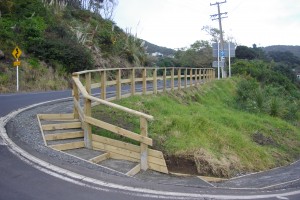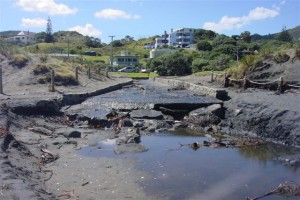 The New Zealand Herald on Saturday June 1 announced that CNN had listed neighbouring beach Karekare at number 38 in its Top 100 Best Beaches in the World on its summer travel website. http://www.nzherald.co.nz/lifestyle/news/article.cfm?c_id=6&objectid=10887739
The New Zealand Herald on Saturday June 1 announced that CNN had listed neighbouring beach Karekare at number 38 in its Top 100 Best Beaches in the World on its summer travel website. http://www.nzherald.co.nz/lifestyle/news/article.cfm?c_id=6&objectid=10887739
Those assembling the list described Karekare as “a grandiose sweep of black sand [that] stretches before bush-clad hills”.
It then went on to say: “Karekare tends to be less touristy than nearby Piha. If you prefer a quieter beach, this is the one.”
While I wish Karekare well, there is a lesson here for Piha folk who campaign for more infrastructure, more development and more of the comforts of town life.
It’s called “Killing the goose that laid the Golden Egg.”
Piha is arguably the more beautiful, more dramatic, more scenic beach of the two. This was recognised early, which is why Piha was lauded in the media of the early twentieth century as one of the most beautiful spots in New Zealand.
 Even in the 1930s, when development started, people started to mourn the loss of Piha’s natural beauty. At a macro level it still retains it, so if you stop at the look-out with its eagle’s eye view of the coast, it is heart-stopping in its natural qualities.
Even in the 1930s, when development started, people started to mourn the loss of Piha’s natural beauty. At a macro level it still retains it, so if you stop at the look-out with its eagle’s eye view of the coast, it is heart-stopping in its natural qualities.
It’s when you get closer you can see the incremental erosion of naturalness that has been inflicted on Piha in the shape of ever expanding and formalised carparks, curbing and channelling, signs, bins installed in the most prominent positions, channelised streams, overhead powerlines and poles, and so on. That is all the public sector’s work, and the downward slide was accelerated because Waitakere City Council adopted the view (going right back to Tim’s Team days) that the splendour of the Coast was best preserved by sacrificing Piha.
 But developments of private land have not helped either. There are more and more highly engineered retaining walls, white concrete driveways, and large and grandiose dwellings built for the view, but with not a great deal of thought for the amenity of Piha.
But developments of private land have not helped either. There are more and more highly engineered retaining walls, white concrete driveways, and large and grandiose dwellings built for the view, but with not a great deal of thought for the amenity of Piha.
In case anybody will judge my assessment to be singularly out-of-date and out-of-touch with what’s wanted at Piha, my view accords with those of more objective judges. The recent monitoring report after five years of the Waitakere Ranges Heritage Area Act, carried out by the Waitakere Ranges Local Board, also highlighted in particular unsympathetic public infrastructure in the heritage area, particularly that installed by Auckland Transport.
And then we have this CNN judgement that pristine Karekare, where every form of development has been fought off by vigilant locals, is winning where Piha has lost.
Ironically, this loss of naturalness is seen to make Piha less attractive to international visitors, where those most strident about more development, think it will make Piha more attractive to tourists.
Anyone who has been at Piha any length of time and has talked to visitors over the years, wll attest that they seek and appreciate wildness and the drama of the coast’s natural beauty above all else.
They do not come here for the footpaths and the toilets, and indeed, in-your-face infrastructure may be enough to keep them away.
Thoughts from Sandra Coney on 2 June 2013


